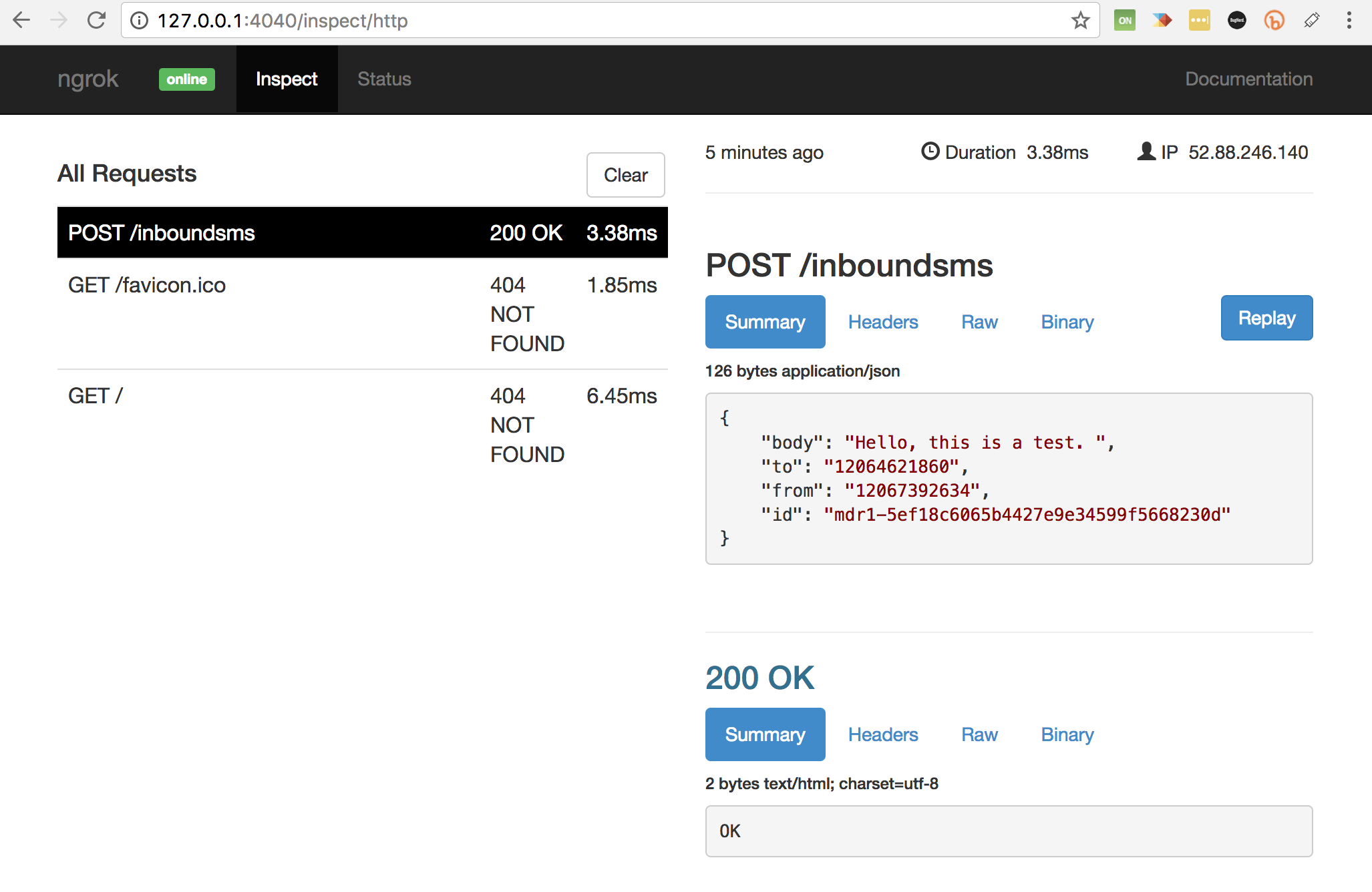Overview
In this tutorial, we will show you a quick way to receive inbound messages on your SMS-enabled Flowroute number. Flowroute handles an inbound SMS by making an HTTP POST request to the public URL that you have configured in your account. This article covers that process in detail.
Normally, a public URL would require web server and DNS changes which are extra steps in local development. In order to test Flowroute's inbound SMS quickly, we will use ngrok to create a tunnel to your localhost, and run a Python script that will let you receive an SMS on your Flowroute number.
Requirements- An activated Flowoute account
- A Flowroute phone number
- Python 2.6 or newer
- Flask framework
- json module
- ngrok
- Run ngrok
- Run example Python script
- Set SMS Callback field to your ngrok public URL
- Access web interface
- Text your Flowroute phone number
Run ngrok
If you haven't downloaded and installed ngrok on your local machine, here's the link again. Open a command shell session and run ngrok on port 8080 to work with our Flask app settings.
ngrok http 8080
Additional ngrok Features
Anyone who can guess your tunnel URL can access your local web server unless you protect it with a password. We will not cover ngrok's auth configuration option which you can enable upon signup. Additionally, if you sign up for a paid ngrok account, you will get access to advanced features such as custom domain and TLS bindings.
Run example Python script
Copy and paste the following Python script into your text editor of choice. Make sure there aren't any extra tabs or spaces to avoid errors.
Example SMS Script in Python
from flask import Flask, request
import json
app = Flask(__name__)
app.debug = True
@app.route('/inboundsms', methods=['POST'])
def inboundsms():
json_content = request.json
print json.dumps(json_content)
return "OK"
if __name__ == '__main__':
app.run(
host="0.0.0.0",
port=int("8080")
)
Save the above as inbound_sms.py. Next, open another terminal window or tab and run the file.
python path_to_file/inbound_sms.py
You should now have a Python web server running on local port 8080.
Set SMS Callback field to your ngrok public URL
Note that we have registered our route as /inboundsms. Copy the forwarding URL from your ngrok session and the app route into the SMS Callback field of your Manage account.
Example SMS Callback
http://5eccb41a.ngrok.io/inboundsms
Access web interface
ngrok provides a real-time web UI where you can inspect all of the HTTP traffic running over your tunnels. You can access yours by pasting http://127.0.0.1:4040 into a web browser.Text your Flowroute phone number
- Select a phone number on the Manage your DIDs tab.
- Send a test SMS from your mobile phone to the Flowroute number you have selected.
 An example inbound SMS with a 200 OK response
An example inbound SMS with a 200 OK response
Potential Errors
A typical error that you might encounter is a 404 Not Found. This usually occurs when the SMS Callback isn't set up correctly.
Tips
If the inboundsms endpoint is misbehaving, check that your Manage SMS Callback field has been set to the Forwarding URL followed by / and your defined Flask route. Also, you can click the Replay button on your ngrok web interface to replay the incoming request instead of sending another test message.
Additional Resources
Here are some additional reading materials that might be useful for you.